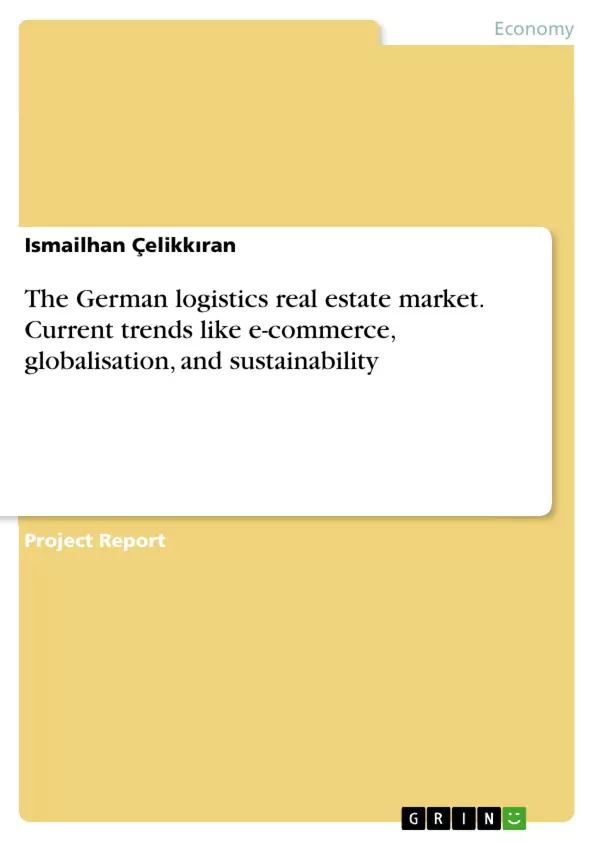This paper elaborates the impact and importance of new trends to illustrate the dynamic change which the German logistics real estate market currently faces due to the globalization of value creation and the strong growth of e-commerce. In addition, there are increasing demands from politicians and customers with regard to reducing the environmental impact of increasing freight traffic. These trends determine the development of the sector on a sustainable basis, as shown by individual indicators, such as the sharp rise in consignment volumes and turnover in parcel business, the increase in container traffic or the emergence of new business models.
The logistics sector is one of the most important infrastructure sectors and contributors to the national economy and the labour market in Germany. In this sector, companies warrant the transport of raw materials, semi-manufactured goods and consumer goods to producers and consumers by various means such as ship, plane, train and truck.
Inhaltsverzeichnis (Table of Contents)
- 1 INTRODUCTION
- 2 CURRENT TRENDS IN THE GERMAN REAL ESTATE MARKET
- 2.1 E-Commerce
- 2.2 Globalisation
- 2.3 Sustainability
- 2.3.1 Electromobility
- 2.3.2 Solar Panels
- 3 OUTLOOK FOR THE LOGISTICS MARKET
Zielsetzung und Themenschwerpunkte (Objectives and Key Themes)
This paper analyzes the impact of current trends on the German logistics real estate market, focusing on the significant changes brought about by e-commerce, globalization, and the growing need for sustainability in logistics operations.
- The rise of e-commerce and its influence on logistics real estate needs.
- The impact of globalization on the German logistics market.
- The increasing demand for sustainable logistics solutions.
- The challenges and opportunities presented by the changing logistics landscape.
Zusammenfassung der Kapitel (Chapter Summaries)
- Chapter 1: Introduction
This chapter introduces the importance of the logistics sector in Germany and the new challenges faced by the logistics real estate industry due to globalization and e-commerce growth. It highlights the increasing pressure for environmentally friendly logistics solutions and discusses the impact of these trends on the dynamic German logistics market.
- Chapter 2: Current Trends in the German Real Estate Market
This chapter examines the impact of e-commerce on the logistics real estate market, focusing on the shift towards smaller, inner-city distribution centers. It explores the challenges of finding suitable spaces in urban areas and the need for innovative solutions like cascading systems, pop-up storage units, and flex hubs. This chapter also discusses the advantages of Germany as a logistics location due to its central position in Europe and its well-developed infrastructure.
Schlüsselwörter (Keywords)
This paper focuses on key concepts such as e-commerce, globalization, sustainability, logistics real estate, distribution centers, urban development, and the German logistics market. It explores the challenges and opportunities presented by these trends for logistics businesses and the real estate industry.
- Quote paper
- Ismailhan Çelikkıran (Author), 2018, The German logistics real estate market. Current trends like e-commerce, globalisation, and sustainability, Munich, GRIN Verlag, https://www.grin.com/document/1027250



